#Emmeline Pankhurst
Explore tagged Tumblr posts
Text

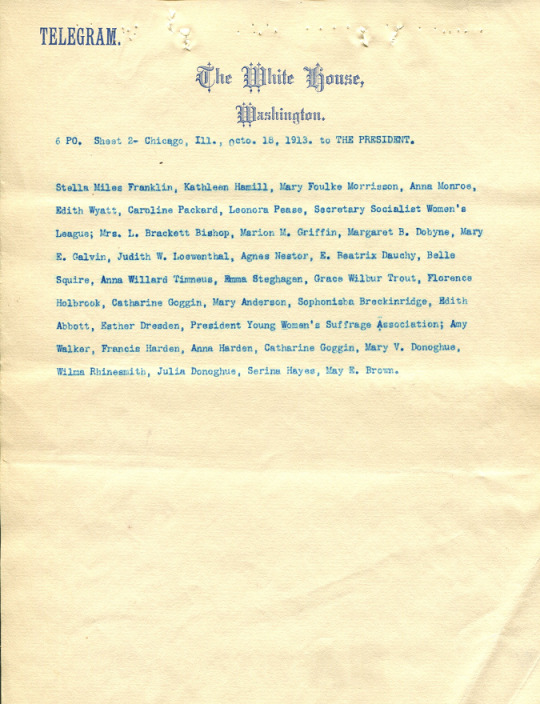
Telegram to President Woodrow Wilson from Jane Addams and Other Women Regarding the Deportation of Emmeline Pankhurst
Record Group 85: Records of the Immigration and Naturalization Service Series: Subject and Policy Files File Unit: Appeal of Mrs. Emmeline Pankhurst for admittance for visit, English Suffragette
This telegram petitioned the Department of Labor and their decision to deport Emmeline Pankhurst, a British suffragette. The authors wanted the board to reconsider and maintain "America's devotion to liberty."
Telegram The White House, Washington 6 PO.FD. 283 139 extra 10:25 p.m. Sa, Chicago, Ill., October 18, 1913. The President. Whereas, the Associated Press reports to the American public that Mrs. Pankhurst's deportation has been ordered by the board of inquiry at Ellis Island and, Whereas, such action is in direct violation of the traditions and customs of the United States which has always been hospitable to the political offenders and revolutionists of all nations, and, Whereas, our sister republic, France, is at the present moment sheltering Christabel Pankhurst, Now, therefore, be it resolved: That we, the undersigned women of Chicago, protest against this flagrant violation of our long established public policy, and, Be it further resolved: That we respectively petition the Department of Labor in reviewing the case of this distinguished English woman to reconsider the decision of the Board of Inquiry and to admit Mrs. Pankhurst; thus maintaining the high traditions of America's devotion to liberty and right of free speech. (Signed) Jane Addams, Louise DeKoven Bowen, Mary Rozette Smith, Mary McDowell, Margaret Dreier Robins, Harriet Taylor Treadwell, President Chicago Political Equality League; Margaret A. Haley, Business Representative Chicago Teachers' Federation; Ida L. M. Furstman, President Chicago Teachers' Federation; Mrs. Harriet S. Thompson, Director Chicago Political Equality League; Edith A. Phelps, Anna Nichols, Laura Dainty Pelham,
Telegram The White House, Washington 6 PO. Sheet 2- Chicago, Ill., Octo. 18, 1913. to the President. Stella Miles Franklin, Kathleen Hamill, Mary Foulke Morrisson, Anna Monroe, Edith Wyatt, Caroline Packard, Leonora Pease, Secretary Socialist Women's League; Mrs. L. Brackett Bishop, Marion M. Griffin, Margaret B. Dobyne, Mary E. Galvin, Judith W. Loewenthal, Agnes Nestor, E. Beatrix Dauchy, Belle Squire, Anna Willard Timneus, Emma Steghagen, Grace Wilbur Trout, Florence Holbrook, Catharine Goggin, Mary Anderson, Sophonisba Breckinridge, Edith Abbott, Esther Dresden, President Young Women's Suffrage Association; Amy Walker, Francis Harden, Anna Harden, Catharine Goggin, Mary V. Donoghue, Wilma Rhinesmith, Julia Donoghue, Serina Hayes, May E. Brown.
49 notes
·
View notes
Text
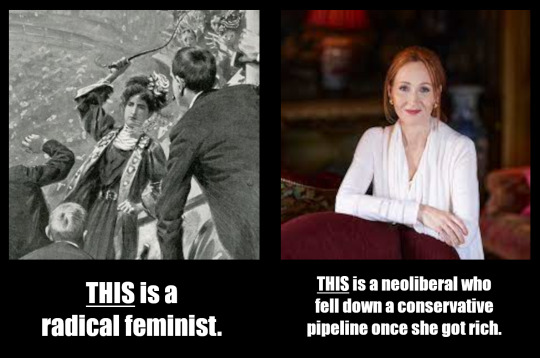
So here's the thing, boys, girls, and everyone outside and in-between. I migrated here from YouTube. And on YouTube (actually anywhere outside of Tumblr), if you voice even the most boilerplate feminist talking points, you will be dismissed as "radical". Same way if you are left-wing, you are "radical". So it's a problem when feminists with radical ideas can't organize on a more femme-friendly platform like Tumblr, because the term has been appropriated by transphobes. It's a problem when referring to yourself by the label the rest of the internet has already tarred you with will simultaneously alienate you from your sisters in other circles. Whether or not it was intentional, this kind of vocabulary confusion serves an anti-feminist agenda.
And on top of that, transphobes really just shouldn't get to call themselves radical, when what they are fighting for is by definition a reinforcement of the status quo. Not to mention it completely ignores the longer history of intersectional feminists who have identified their ideology as "radical". In my mind, words should mean what it sounds like they should mean: so a "radfem" is an activist who supports/condones extremist tactics to enforce a feminist agenda, and the dissolution of the gender binary is the only logical conclusion of the feminist agenda, so LGBT rights are automatically included. If you exclude trans women from your movement, not only are you not radical but you can't be a feminist.
Committing arson for the suffragette movement (or the pro-choice movement, or trans rights) is RADICAL FEMINISM. Arguing that t-girls can't be oppressed under patriarchy, as if misogynistic socialization can't happen while people are fully clothed, is just fucking stupid.
In conclusion "TERF" is a horribly confusing, oxymoronic misnomer, and we as the people trying to criticize transphobes should stop entertaining it as a valid descriptor.
#feminism#radical feminism#lgbtqia#rf without the te#sisters not cis-ters#emmeline pankhurst#theresa garnett#helen ogston#feminist terrorism#suffragette bombings#learn your history
16 notes
·
View notes
Text
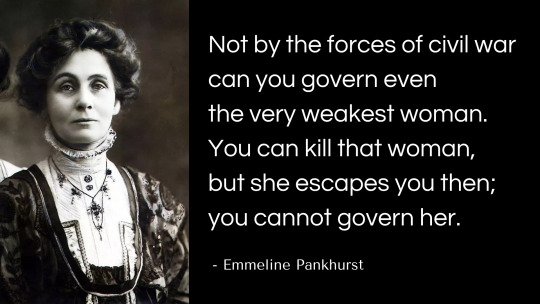
#emmeline pankhurst#feminist quote#quotes#suffragettes#women's resistance#patriarchy#systemic oppression#systemic misogyny#systemic inequality#female resistance#feminism#radical feminism
37 notes
·
View notes
Text


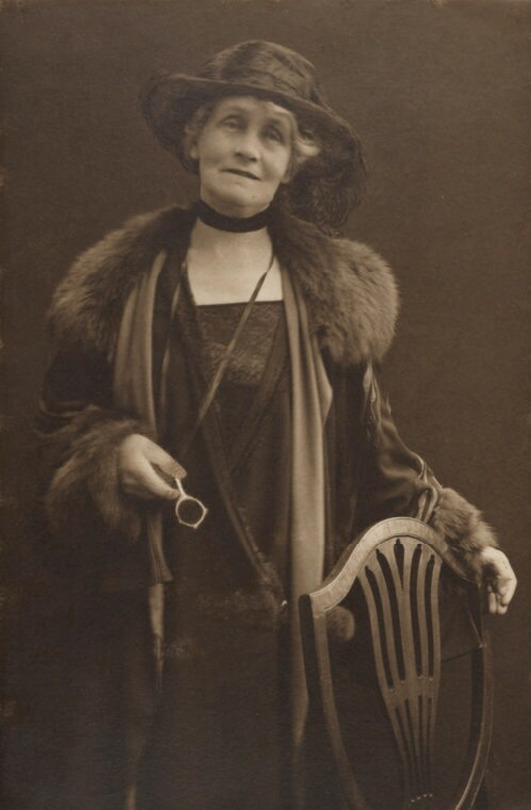
Georgina Agnes Brackenbury, Emmeline Pankhurst, 1927
Olive Edis, Emmeline Pankhurst, 1920s
Olive Edis, Emmeline Pankhurst, ca. 1920s
Emmeline Pankhurst (née Goulden; 15 July 1858 – 14 June 1928) British political activist who, with her daughters, organised the United Kingdom’s suffrage movement and helped UK women claim their right to vote.
#Georgina Agnes Brackenbury#Olive Edis#portrait#portrait painting#portrait photography#portraiture#emmeline pankhurst#feminism#feminist#women's suffrage#suffrage#the vote#activism#womens rights#feminist activism#feminist action#british history#british women#art history#aesthetictumblr#tumblraesthetic#tumblrpic#tumblrpictures#tumblr art#tumblrstyle#artists on tumblr#aesthetic
26 notes
·
View notes
Text
It's kinda off time and but it was my first edit
#my edit#edit#womens rights#2024 presidential election#president trump#donald trump#kamala harris#kamala 2024#vote kamala#f scott fitzgerald#zelda fitzgerald#suffragettes#emmeline pankhurst#labour#paris paloma
3 notes
·
View notes
Text
Mrs Pankhurst, Christabel and Sylvia initially had high hopes of the Labour movement which, unlike other parties, professed itself to be in favour of women's suffrage, but they were to find (as women had been finding in many countries of the world once they claimed the right to vote) that there was a great discrepancy between a commitment in theory and the test of practice. They encountered the argument that there were many more important issues than women's suffrage; these important issues of course related to men.
Keir Hardie was one of the few staunch supporters (if not the only one). Many of the other men - past colleagues of Dr Pankhurst - who came to the Pankhurst house to talk politics were extensively grilled by Christabel on their stand on woman's suffrage, and none of them gave satisfactory answers as far as the Pankhursts were concerned. 'Bruce Glasier,' states Sylvia, ‘far from realizing the new spirit that had taken possession of our home, offended badly. It was not essential, he argued, that the whole people should be enfranchised. So long as the division were not upon class lines.’ An old and familiar argument. But Glasier went further and argued as John Stuart Mill's father had done about eighty years before that ‘those outside the suffrage would be represented by those within; their interests would be the same. There was no distinction of interest on sex, but only on class lines’ (S. Pankhurst, 1931, p. 167). As Anna Wheeler had been enraged by James Mill, the Pankhursts were infuriated by Bruce Glasier and his colleagues: ‘This opinion, common enough amongst Socialists of the time was bitterly resented,’ states Sylvia (ibid.).
Men did not and do not hear what women are saying. So what was to be done? As far as the Pankhursts were concerned they decided it was a waste of energy to keep telling men! If after so many years of discussion and debate, of clear and cogent argument, 'radical' men could persist with their line of reason that women had no specific grievances and what minor 'difficulties' did exist would be ironed out after men had fixed up the world for themselves, one would have to be a dunce or a masochist to pursue a policy of trying to change men's minds. That women should stop talking to men about what was to be done, and start talking to each other, was a strategy that gained in popularity among the Pankhursts over the incident of the Pankhurst Hall.
The Hall had been financed by the appeal launched on Dr Pankhurst's death. The Pankhurst women were quite involved in its construction, with Sylvia giving much of her time to it by assuming the responsibility for its decoration. One can imagine their anger, then, when they found they were not allowed to use Pankhurst Hall, for women were not permitted to become members of that particular branch of the Independent Labour Party. This humiliation was rendered even more galling when they discovered that men who chose not to be members of the ILP, were nevertheless permitted to use it. This was too much: it ‘proved the last straw which caused Mrs Pankhurst to decide on the formation of a new organization of women’, said Sylvia (ibid.). She came to the conclusion that 'she had wasted her time in the ILP' (ibid., p. 68), and she wasn't going to waste it any more. There was nothing else for women to do but to assume responsibility for their own quest for political representation: on 10 October 1903 the Women's Social and Political Union was formed. Sylvia reports that the break with the Labour party was not undertaken lightly by Mrs Pankhurst, and that she was extremely distressed, but under the circumstances she thought women had no choice but to work for themselves.
-Dale Spender, Women of Ideas and What Men Have Done to Them
#dale spender#emmeline pankhurst#christabel pankhurst#Sylvia Pankhurst#womens suffrage#womens history#British history#male hypocrisy#female oppression
19 notes
·
View notes
Text
The General
Nicknamed “The General” for leading Women’s Rights marches while wearing a military-style uniform complete with an officer’s cap and epaulettes, Flora Drummond is one of 59 women listed on the plinth of the Millicent Fawcett statue in Parliament Square, London. Often seen on horseback, Drummond helped organise the Women’s Social and Political Union (WSPU) and earned a reputation for her ability…

View On WordPress
#Emmeline Pankhurst#First World War#Flora Drummond#hunger strikes#london#Millicent Fawcett#patreon#prison#suffragette general#suffragettes#the general#votes for women#women&039;s suffrage#women&039;s duffrage#women&039;s guild of empire#world war one#world ward one#WSPU
3 notes
·
View notes
Text

4 notes
·
View notes
Text

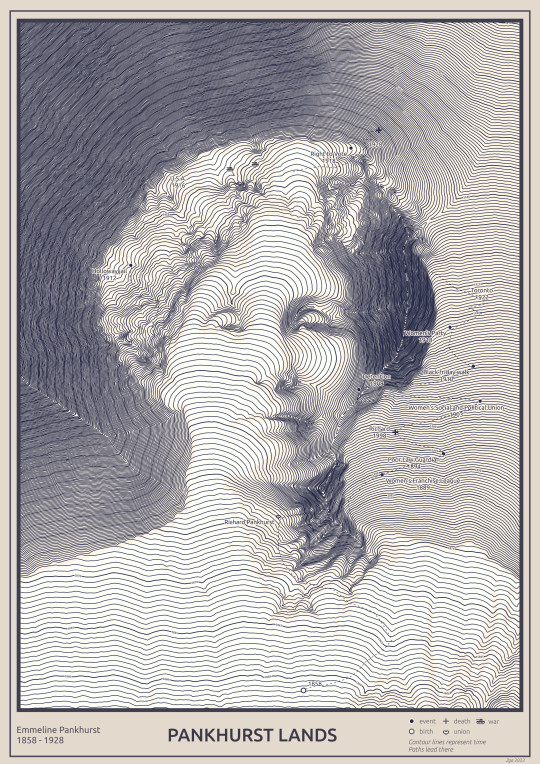
Emmeline Pankhurst
A cartographic micro-biography
2 notes
·
View notes
Text
Emmeline Pankhurst: La donna che ha cambiato la storia con il motto “Fatti, non parole”. Recensione di Alessandria today
Un viaggio nella vita di una leader straordinaria che ha trasformato il panorama dei diritti delle donne.
Un viaggio nella vita di una leader straordinaria che ha trasformato il panorama dei diritti delle donne. La lotta di una donna per l’uguaglianza Nel cuore dell’Inghilterra vittoriana, Emmeline Pankhurst, nata il 15 luglio 1858 a Manchester, ha scritto una delle pagine più significative della storia del XX secolo. Cresciuta in un periodo in cui le donne erano relegate ai margini della società,…
#Alessandria today#Attivismo#battaglie per i diritti#Coraggio#Diritti Umani#diritto di voto#Disobbedienza civile#Donne Coraggiose#donne nella storia#Emancipazione femminile#Emmeline Pankhurst#eredità femminista#femminismo storico#forza delle donne#forza e determinazione#Forza motrice#giustizia sociale#Google News#Inghilterra vittoriana#italianewsmedia.com#leader femminili#lotta per l’uguaglianza#marce suffragiste#Movimento femminista#Pier Carlo Lava#progresso sociale#scioperi della fame#storia britannica#storia delle donne#storia ispiratrice
0 notes
Text
Those of my readers who are unable to connect the word 'militancy' with anything milder than arson are invited to reflect that within the first two months of the year 1907 the English Government sent to prison one hundred and thirty women whose 'militancy' consisted merely of trying to carry a resolution from a hall to the Prime Minister in the House of Commons.
- My Own Story by Emmeline Pankhurst; Book Two, Chapter One
0 notes
Text
youtube
If you’re new here, what’s up? I’m super excited to dive into a topic today that’s packed with inspiration, curiosity, and, honestly, a bit of shock! 🤯 You’re gonna love this. I mean, who doesn’t love a good story about powerful women? This video is all about the surprisingly fascinating lives of influential women who shaped our modern society. #EmmelinePankhurst #Suffragette #WomensRights #Feminism #HistoryMakers #VotesForWomen #Empowerment #SocialJustice #WomenInHistory #PankhurstLegacy
#youtube#amazing#photography#photos#emmeline pankhurst#suffragette#womens rights#votes for women#women in history#social justice#feminism#women
0 notes
Link
Emmeline Pankhurst was a British political activist who organised the British suffragette movement and helped women to win in 1918 the right to vote in Great Br...
Link: Emmeline Pankhurst
0 notes
Text
Golden Dymamite
youtube
#women's suffrage#feminism#women in art#women in history#history#emmeline pankhurst#susan b anthony#sojourner truth#suffragette#Youtube
0 notes
Text

Emmeline Pankhurst Memorial (St Peter's Square, Manchester, 2024)
Possibly my favorite statue of all time. I've been fascinated and awed by her since I first saw her as a little girl.
#emmeline pankhurst#manchester#manchesterphotography#photography#dark academic aesthetic#st peters square#feminism#feminist photography#uk photography
1 note
·
View note
Text
Breve historia de la evolución de la voz de la mujer en el entorno laboral
Fuente: People y Acciona La voz de las mujeres no lo ha tenido fácil para ser escuchada, sobre todo en ámbitos de poder o en el entorno laboral. people.acciona.com Periodistas, políticas, mujeres en podcast y medios de comunicación, mujeres publicando libros, artículos, rodando películas, series… Afortunadamente, (aunque no en todos los países ni culturas por igual) cada vez son más las…

View On WordPress
#derecho al voto#Derechos de la Mujer#discurso público#Emmeline Pankhurst#Equidad de Género#Hepeating#Hillary Clinton#invisibilizada#mansplaining#masculinidad#Olympe de Gouges#patriarcado#perspectivo de género#poder#silenciada#voz
0 notes